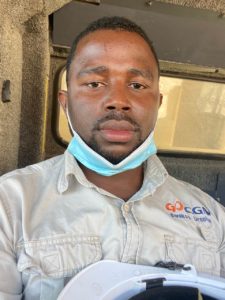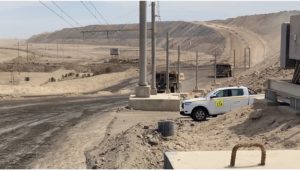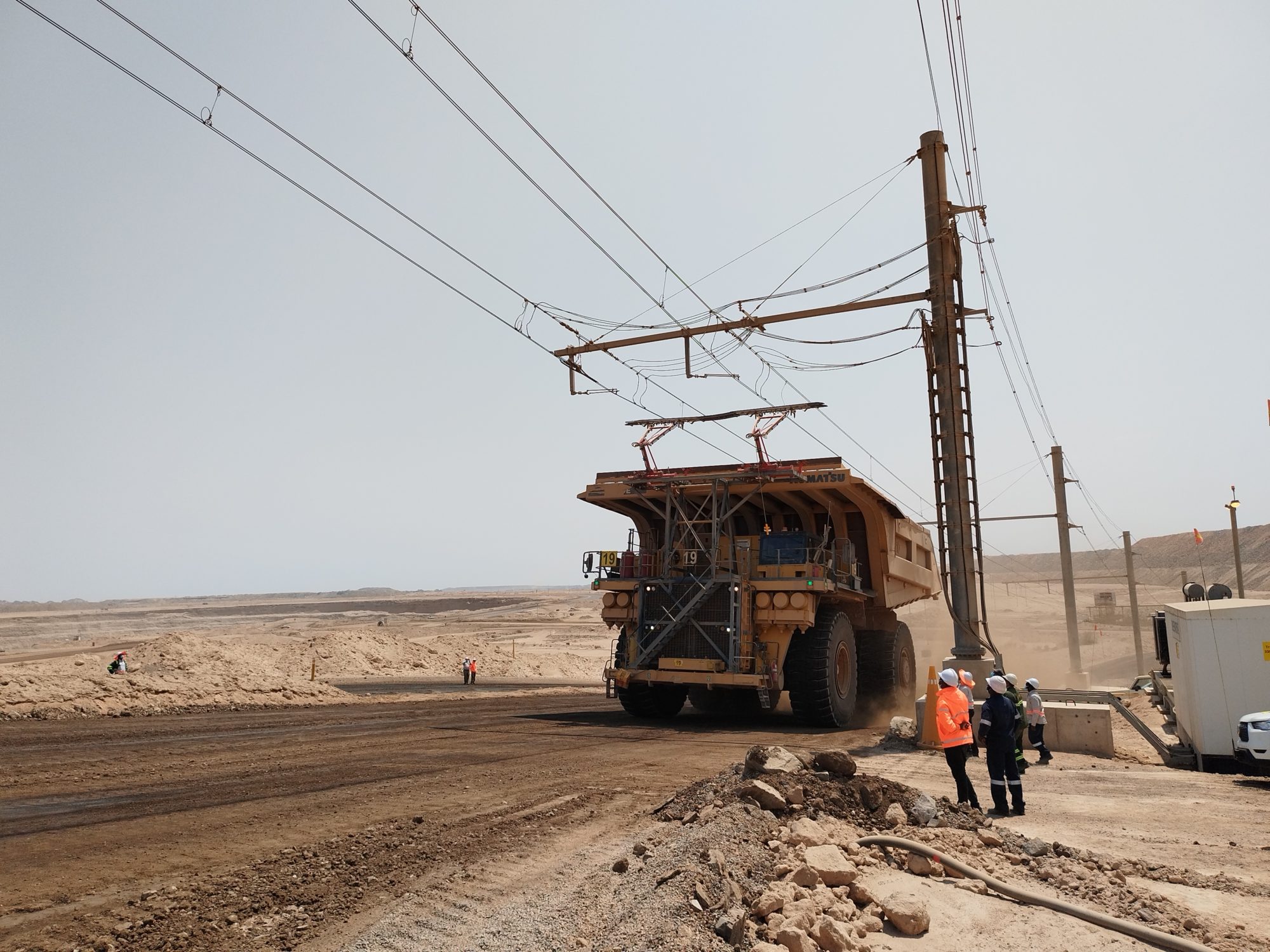Back in 2015, Swakop Uranium invested in a new mining fleet for the new Husab uranium mine near the town of Swakopmund in western-central Namibia consisting of 23 327 t class Komatsu 960E-2KT electric dump trucks and three Chinese NHL NTE330 electric drive trucks of the same class. All the trucks were trolley-ready with a view to starting up the trolley assist operation as the mine ramped up in 2017.
One main trolley line was completed in 2017/2018 but until now the trucks have not been using it. Immanuel Matheus, Senior Engineer, Mining Technical told IM: “Trolley’s benefits for these years have been reduced by the significant decline in oil prices and the increase in local electricity tariffs during. There was also a need to increase the nominal maximum demand (NMD) of the mine.”
Immanuel Matheus, Swakop Uranium Senior Engineer – Mining Technical

However, with more favourable power prices plus the general industry push to reduce reliance on diesel, trolley assist at Husab is again in the spotlight to both reduce costs and increase mine productivity due to higher truck speeds. Testing with two of the Komatsu 960E-2KT trucks under trolley began in late 2022 and with the successful trial completed the line and these two trucks are now commissioned. Matheus said that eventually all of the 960Es and NTE330s will be using the trolley line.
Referred to as trolley line 1, it is 680 m in length including the supporting poles. It is slightly curved towards the end of the ramp which is a challenge in terms of alignment of the pantographs. Other challenges include the regular road maintenance to keep the profile smooth, and the fact that there are no trolley experienced operators at the mine currently. In addition, Matheus said that the project is labour intensive as for any rejects except due to low speed when connecting to the overhead line, there must be a HT (high tension) technician on standby to clear the fault. A high voltage technician must also be on standby in case the trolley line trips.
But the benefits are clear already. Matheus told IM: “It allows the haul trucks to move faster on ramps and in fact it doubles the on-ramp speed to 24 km/h for the 960E, resulting in reduced cycle times and increased haulage productivity. While on the trolley line, the truck engine goes into idle mode which significantly reduces the fuel burn on ramps. The result is a reduction in noise and CO2 emissions to the environment.”
The energy is supplied by an external provider (Nampower), however the mine also has a 12 MW solar plant to supplement the mine’s energy needs. Siemens was responsible for the trolley line construction. The onboard truck trolley equipment was supplied by Komatsu (the 960E truck has a Komatsu AC electric drive, Siemens alternator and liquid cooled Insulated Gate Bipolar Transistor inverter system) with the exception of the pantographs which were supplied by Pamodzi Unique Engineering in South Africa.
The two Komatsu 960Es coming up the trolley line at Husab

As things stand today, the payback period is expected to be roughly three to four years. The project remains, however, sensitive to diesel prices which change monthly in Namibia. Any increases in diesel prices will of course favour the project.
Swakop Uranium is a partnership between the Republic of Namibia and the People’s Republic of China of which 10% is held by the Namibian state-owned Epangelo Mining Company and 90% by Taurus Minerals Ltd, jointly owned by China General Nuclear Power Group and the China Africa Development Fund.











